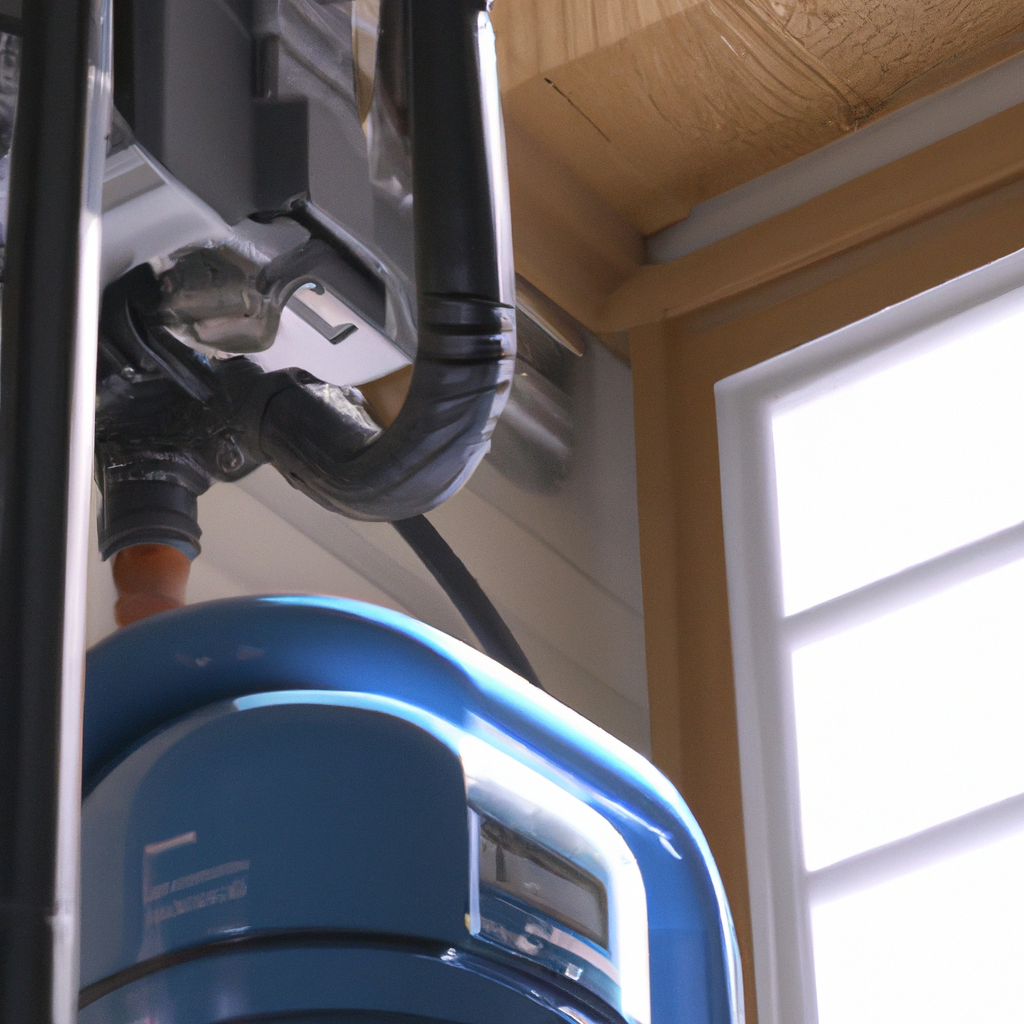A heat pump is an energy-efficient system that moves heat from one place to another. It can be used for both heating and cooling in residential and commercial buildings. In this article, we will explain how a heat pump works, the different types of heat pumps, their efficiency, technology, installation, and maintenance.
How Does a Heat Pump Work?
To understand how a heat pump works, we need to know the basic concept of refrigeration. A refrigerant is a substance that absorbs heat when it evaporates and releases heat when it condenses. A heat pump uses this principle to move heat from one place to another.
In heating mode, the heat pump absorbs heat from the outside air or ground and transfers it to the indoor air through a heat exchanger. In cooling mode, the heat pump absorbs heat from the indoor air and releases it to the outside air or ground through the same heat exchanger.
The heat pump system consists of four main components: the evaporator, compressor, condenser, and expansion valve. The refrigerant flows through these components in a cycle to transfer heat.
Types of Heat Pumps
There are two main types of heat pumps: air source heat pump (ASHP) and ground source heat pump (GSHP).
An air source heat pump extracts heat from the outside air and transfers it to the indoor air. It is more suitable for moderate climates where temperatures rarely drop below freezing. ASHPs are easier and cheaper to install than GSHPs, but they are less efficient in colder temperatures.
A ground source heat pump extracts heat from the ground and transfers it to the indoor air. It is more suitable for colder climates where temperatures can drop below freezing. GSHPs are more expensive to install than ASHPs, but they are more efficient in colder temperatures.
Heat Pump Efficiency
Heat pump efficiency is measured by the coefficient of performance (COP). COP is the ratio of heat output to energy input. The higher the COP, the more efficient the heat pump.
A typical air source heat pump has a COP of 2.5 to 3.5, which means it can produce 2.5 to 3.5 units of heat for every unit of electricity input. A ground source heat pump has a COP of 4 to 5, which means it can produce 4 to 5 units of heat for every unit of electricity input. The efficiency of a heat pump depends on many factors, such as temperature, humidity, insulation, and airflow.
Heat Pump Technology
Heat pump technology has advanced significantly in recent years. New features such as inverter technology, variable-speed compressor, and smart controls have improved the efficiency and comfort of heat pumps.
Inverter technology allows the compressor to adjust its speed according to the heating or cooling demand. This reduces energy consumption and improves temperature control.
A variable-speed compressor allows the heat pump to operate at different speeds depending on the heating or cooling demand. This reduces energy consumption and noise levels.
Smart controls allow the heat pump to communicate with other devices, such as thermostats, sensors, and smartphones. This improves the user experience and energy efficiency.
Heat Pump Installation
Heat pump installation requires professional expertise and equipment. The installation process includes sizing, design, ductwork, electrical, and refrigeration work.
Sizing involves calculating the heating and cooling load of the building and selecting the appropriate size and type of heat pump.
Design involves selecting the location, orientation, and airflow of the heat pump system to optimize its performance and efficiency.
Ductwork involves installing or modifying the air distribution system to accommodate the heat pump system.
Electrical work involves connecting the heat pump system to the power supply and ensuring it meets the safety standards.
Refrigeration work involves charging the refrigerant and testing the system for leaks and performance.
Heat Pump Maintenance
Heat pump maintenance is essential to ensure its efficiency, reliability, and longevity. Regular maintenance includes cleaning, inspection, and tuning.
Cleaning involves removing debris, dust, and dirt from the heat pump system to improve airflow and performance.
Inspection involves checking the electrical, refrigeration, and safety components of the heat pump system to ensure they function properly.
Tuning involves adjusting the settings and controls of the heat pump system to optimize its performance and efficiency.
Conclusion
A heat pump is an energy-efficient system that can provide heating and cooling for residential and commercial buildings. It works by moving heat from one place to another using refrigeration technology. There are two main types of heat pumps: air source heat pump and ground source heat pump. Heat pump efficiency is measured by the coefficient of performance, which depends on many factors. Heat pump technology has advanced in recent years, offering new features such as inverter technology, variable-speed compressor, and smart controls. Heat pump installation requires professional expertise and equipment, while heat pump maintenance is essential to ensure its efficiency, reliability, and longevity.







